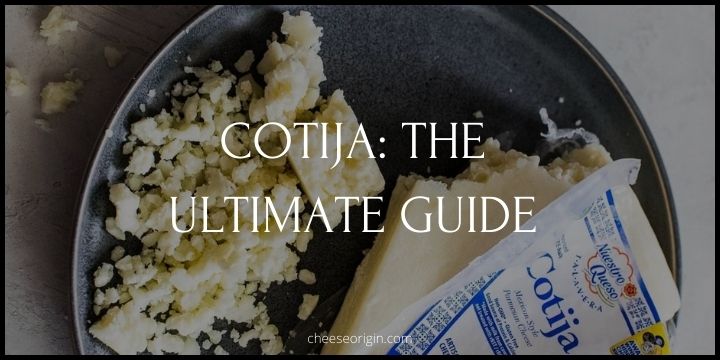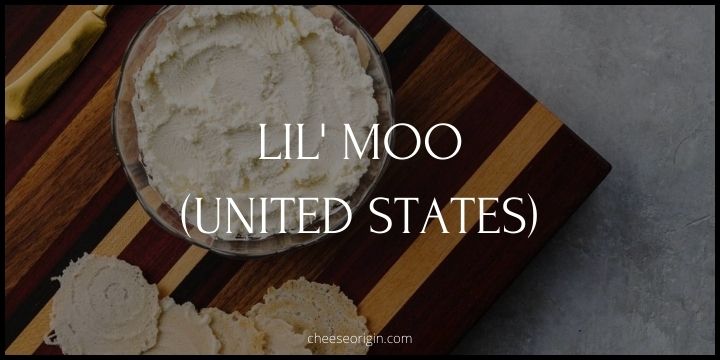What is Limburger? A Deep Dive into the World’s Stinkiest Cheese

Welcome to an aromatic adventure that’s sure to challenge your senses! Today, we’re embarking on a flavorful journey into the world of Limburger – the world’s stinkiest cheese. Often misunderstood, this infamous cheese has a reputation that precedes it.
But beyond its pungent exterior lies a rich, complex flavor profile that has made it a beloved delicacy for many cheese enthusiasts around the globe.
In this guide, we’ll plunge into the depths of Limburger’s history, uncover its unique production process, and learn why its distinctive aroma is a testament to its quality rather than a deterrent. We’ll debunk myths, share fascinating trivia, and even provide tips on how to best enjoy this bold cheese.
So brace yourselves, dear readers. It’s time to hold your noses and open your minds as we take a deep dive into the intriguing and aromatic universe of Limburger cheese.
This isn’t just about exploring a type of cheese; it’s about challenging perceptions and discovering that sometimes, the most rewarding flavors require a courageous palate.
Quick facts about Limburger
| Quick Fact | Details |
|---|---|
| Origin | Limburger cheese originated in the Duchy of Limburg, a historical region now divided among modern-day Belgium, Germany, and the Netherlands. |
| Production | Initially, Limburger was made by Belgian Trappist monks. Today, it’s primarily produced in Germany. The only U.S. producer is the Chalet Cheese Cooperative in Monroe, Wisconsin. |
| Texture | Limburger is a semi-soft cheese with a creamy and yielding texture. |
| Smell | Known as the world’s smelliest cheese, Limburger has a pungent aroma due to the bacterium Brevibacterium linens used in its aging process. |
| Taste | Despite its strong smell, Limburger has a mild flavor with a hint of tanginess. The taste becomes stronger and more pungent as the cheese ages. |
| Pairings | Limburger pairs well with robust beers, rye bread, onions, and strong coffee. |
| Nutritional Value | It’s a good source of protein, calcium, and phosphorus, but it’s also high in fat and sodium. |
| Aging Process | Limburger is typically aged for two to three months. The rind turns from pale yellow to reddish-brown during this period. |
| Global Recognition | Despite its notorious reputation, Limburger is cherished in many parts of the world, including Germany, Belgium, and certain regions of the U.S., like Wisconsin. |
What is Limburger?

Limburger is a type of cheese known for its particularly strong smell. Originating from the historical Duchy of Limburg, which spans modern-day Belgium, Germany, and the Netherlands, it was first created by Belgian Trappist monks.
The cheese is semi-soft with a reddish-brown rind and a creamy interior. The pungent aroma of Limburger, often compared to body odor, is due to the bacterium Brevibacterium linens, which is used in the aging process and is also responsible for the smell of human skin.
Despite its notorious odor, Limburger has a surprisingly mild flavor when young, with a slight tanginess. As the cheese ages, it develops a stronger, more robust flavor. It’s often served with rye bread, onions, and a strong beer or coffee.
While Limburger might be an acquired taste for some, it is cherished in many parts of the world, especially in Germany and certain regions of the United States, like Wisconsin, where it continues to be produced today.
What does Limburger taste like?
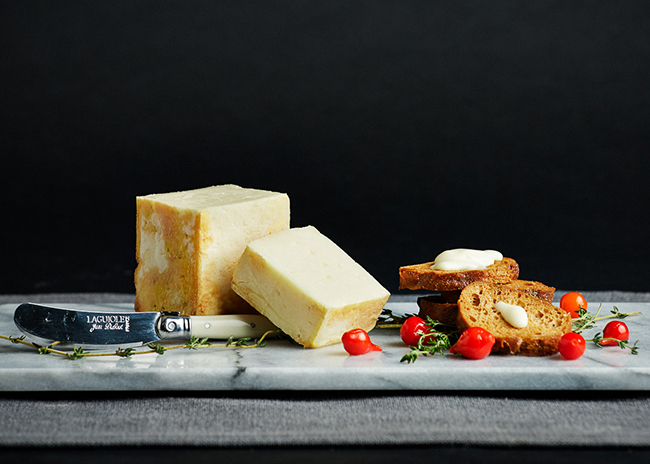
Despite its infamous smell, Limburger cheese has a surprisingly mild flavor when it’s young, with a slightly sweet and tangy profile. Its texture is creamy and yielding, often compared to the consistency of Brie or Camembert.
However, as Limburger ages, its taste becomes stronger and more pronounced. It develops a robust, earthy flavor that is rich and meaty with hints of mushrooms. The rind of the cheese, which is edible, adds a bit of texture and an extra punch of flavor.
While it might be an acquired taste for some due to its pungent aroma, those who appreciate strong cheeses often find Limburger’s complex flavor profile quite enjoyable.
Limburger tasting notes
- Texture: Semi-soft and creamy, the texture of Limburger is often compared to Brie or Camembert. The cheese has an edible rind that provides a bit of texture contrast to the soft interior.
- Aroma: Limburger is known for its pungent, strong aroma. Often compared to body odor, the smell is a result of the bacterium Brevibacterium linens used in the aging process.
- Flavor when young: When young, Limburger has a mild flavor. It’s slightly sweet and tangy, with a creamy mouthfeel.
- Flavor when aged: As Limburger ages, the flavor becomes more robust and pronounced. It develops an earthy, rich, meaty taste with hints of mushrooms. The rind contributes an extra layer of flavor that is bolder and tangier.
- Aftertaste: The aftertaste of Limburger can be quite long-lasting and strong, especially if the cheese is well-aged. It has a lingering tanginess and a deep, savory quality.
- Pairings: Limburger pairs well with robust, hearty foods like rye bread and onions. In terms of beverages, it goes well with dark beers and strong coffee, which can stand up to the cheese’s bold flavor.
- Overall Impression: Despite its notoriously strong smell, Limburger is a cheese of surprising complexity and depth. It offers a unique tasting experience, particularly for those who appreciate strong, flavorful cheeses.
Why do people eat Limburger cheese?
People eat Limburger cheese primarily for its unique flavor and texture. While it’s notorious for its strong smell, many find that the aroma contributes to a more complex and enjoyable tasting experience.
- Complex Flavor: Despite its strong smell, Limburger has a surprisingly mild flavor when young, but as it ages, it develops a robust, earthy, and meaty taste with hints of mushrooms. This complex flavor profile is cherished by many cheese lovers.
- Creamy Texture: Limburger has a semi-soft and creamy texture that is often compared to Brie or Camembert. This pleasing texture adds to its overall culinary appeal.
- Culinary Tradition: Originating from the historical Duchy of Limburg, which spans modern-day Belgium, Germany, and the Netherlands, Limburger cheese is part of the culinary tradition in these regions. Eating Limburger is a way of celebrating and preserving this heritage.
- Pairing Potential: Limburger pairs well with robust, hearty foods like rye bread and onions. It also complements strong beverages like dark beers or coffee, making it a versatile choice for various dishes and pairings.
- Novelty and Adventure: For some, the very pungency that might deter others is part of the appeal. Trying Limburger can be a gastronomic adventure, a chance to experience a cheese that pushes the boundaries of flavor and aroma.
Note: while Limburger may not be for everyone due to its infamous odor, those who appreciate it often find it a rewarding and flavorful experience.
Is Limburger cheese safe to eat?
Yes, Limburger cheese is safe to eat. It’s made following strict food safety regulations and is perfectly safe for consumption when properly stored and handled.
The strong smell of Limburger cheese, which some people find off-putting, is actually a natural byproduct of the cheese-making process. The bacterium Brevibacterium linens, used in aging the cheese, is responsible for its distinctive aroma but it doesn’t indicate that the cheese is spoiled or unsafe.
Like all cheeses, it’s important to store Limburger properly to maintain its quality and safety. It should be kept refrigerated, and once opened, it should be consumed within a certain period of time. Always check for signs of spoilage such as mold growth (other than the rind) or an off smell before eating.
Also read: What’s the Best Way to Store Cheese?
Remember to consume Limburger cheese in moderation as part of a balanced diet, due to its high fat and sodium content.
Does Limburger cheese melt?
Yes, Limburger cheese can melt. It is a semi-soft cheese, which means it has a good melting quality.
When heated, Limburger becomes more creamy and spreadable, making it a suitable choice for dishes that require melted cheese, such as grilled cheese sandwiches, macaroni and cheese, or as a topping on burgers.
However, due to its strong flavor and aroma, it might not be the first choice for everyone when it comes to melted cheese dishes. But for those who enjoy its distinct taste, melted Limburger can add a unique twist to traditional recipes.
Is Limburger cheese hard or soft?
Limburger cheese is a semi-soft cheese. In its early stages of aging, within the first month, Limburger can be firm and crumbly.
However, as it continues to age, it becomes chalky and soft after about six weeks. By two months, the cheese is much smoother and creamier, with a spreadable consistency.
It’s worth noting that the cheese has a distinct brown rind with ivory cheese inside. Its texture, along with its strong aroma and flavor, contributes to its unique eating experience.
Is Limburger healthy?
Limburger cheese, like many cheeses, can be part of a healthy diet when consumed in moderation. It provides several nutrients, including protein, calcium, and vitamins such as Vitamin B12 and Vitamin A.
However, Limburger cheese is also high in fat and sodium. A one-ounce serving of Limburger cheese contains around 9 grams of fat (including 6 grams of saturated fat) and about 279 milligrams of sodium. Therefore, it should be eaten sparingly, especially if you are monitoring your intake of these nutrients for health reasons.
Furthermore, soft and semi-soft cheeses like Limburger may not be suitable for people with certain health conditions or dietary restrictions, such as individuals who are lactose intolerant or pregnant women who are advised to avoid certain types of cheeses due to the risk of listeria.
Limburger nutrition facts
| Nutrient | 1 oz (28.35g) |
|---|---|
| Calories | 92.7 |
| Total Fat | 4.9g |
| Sodium | Not specified |
| Carbohydrates | 0.1g |
| Fiber | 0g |
| Sugar | 0.1g |
| Protein | 3.6g |
7 best Limburger substitutes
| Substitute | Why It Works |
|---|---|
| Harz Cheese | Harz cheese is a German cheese that has a strong aroma similar to Limburger. It’s a semi-soft cheese, so it has a similar texture as well. |
| Herve Cheese | Herve is a Belgian cheese with a strong smell and flavor, much like Limburger. It’s also a washed-rind cheese, which gives it a similar outer layer. |
| Munster Cheese | Munster is an American cheese that’s known for its strong smell. It’s a semi-soft cheese like Limburger, and it melts well, making it a good substitute in many dishes. |
| Maroilles Cheese | This French cheese has a pungent smell and a strong flavor, similar to Limburger. It’s also semi-soft and has a similar texture. |
| Taleggio Cheese | Taleggio is an Italian cheese with a strong aroma. Its flavor is milder than Limburger but it can still work as a substitute due to its similar texture. |
| Roquefort Cheese | Roquefort is a blue cheese with a strong flavor. It’s not as soft as Limburger, but it can be used as a substitute in dishes where the strong flavor is more important than the texture. |
| Stinking Bishop | This British cheese is known for its strong smell, similar to Limburger. It’s a washed-rind cheese with a creamy texture, making it a good substitute. |
What pairs well with Limburger?
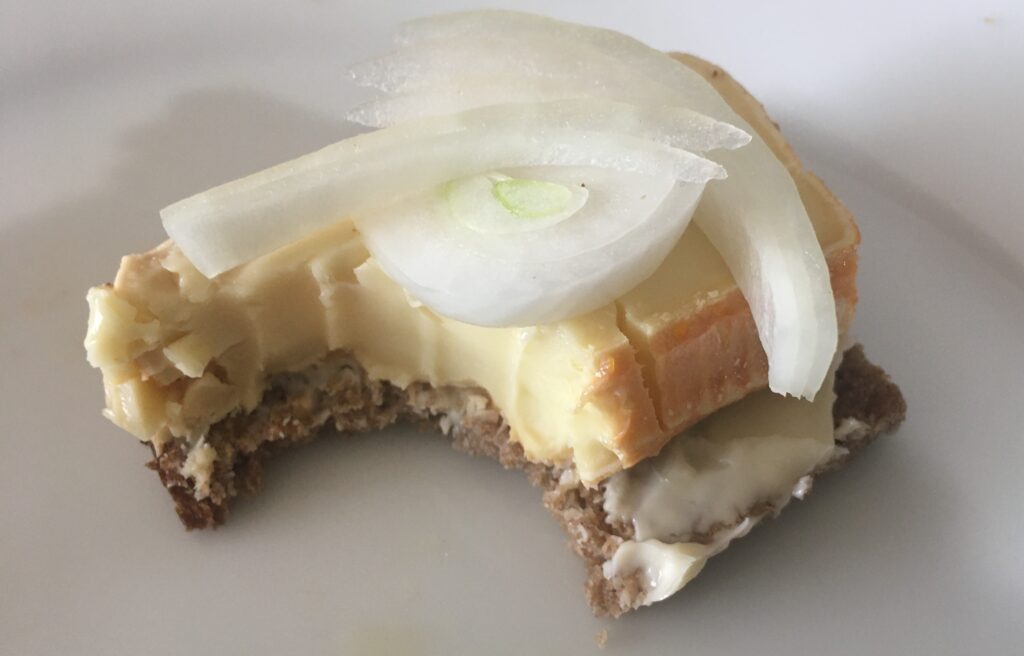
Food that goes well with Limburger
| Category | Food |
|---|---|
| Breads | Rye bread, Bavarian soft pretzels |
| Fruits | Strawberries, Figs |
| Spreads | Strawberry jam, Fig jam |
| Condiments | Mustard |
| Vegetables | Sweet onion slices |
| Dishes | Limburger cheese salad, Limburger mac and cheese |
These pairings work well due to the balance they provide against the strong flavor and aroma of Limburger cheese.
The sweetness of fruits and jams complements the cheese’s nutty flavor, while mustard and onions provide a savory contrast. Breads like rye and pretzels serve as a good base for the cheese, and dishes like salads and mac and cheese allow the Limburger to shine while being balanced by other ingredients.
Beverage that goes well with Limburger
| Category | Beverage |
|---|---|
| Wines | Zinfandel wine, Fruity whites, Cabernet Sauvignon |
| Beers | Lager, Belgian style beer, Bock beer, Stout |
| Non-Alcoholic | Strong black coffee |
These beverages complement the strong flavor and aroma of Limburger cheese. The fruity and bold flavors of wines provide a balance against the cheese’s pungency.
Beers, especially those with a hearty taste like lager or bock, are traditional pairings that can stand up to Limburger’s robust flavor.
For non-alcoholic options, strong black coffee can be a good match due to its rich and intense flavor.
Also read: Best Wine and Cheese Pairings: The Ultimate Guide
Where to buy Limburger?
- Vern’s Cheese
- Wisconsin Cheese Mart
- Amazon
- Bavaria Sausage
- Cheese House
- Chalet Cheese Co-op
- Williams Cheese
- Colosse
- Instacart
- Gibbsville Cheese
These online retailers offer a variety of Limburger cheeses and deliver across the U.S. Please check each site for availability and shipping policies.
The History and Origin of Limburger
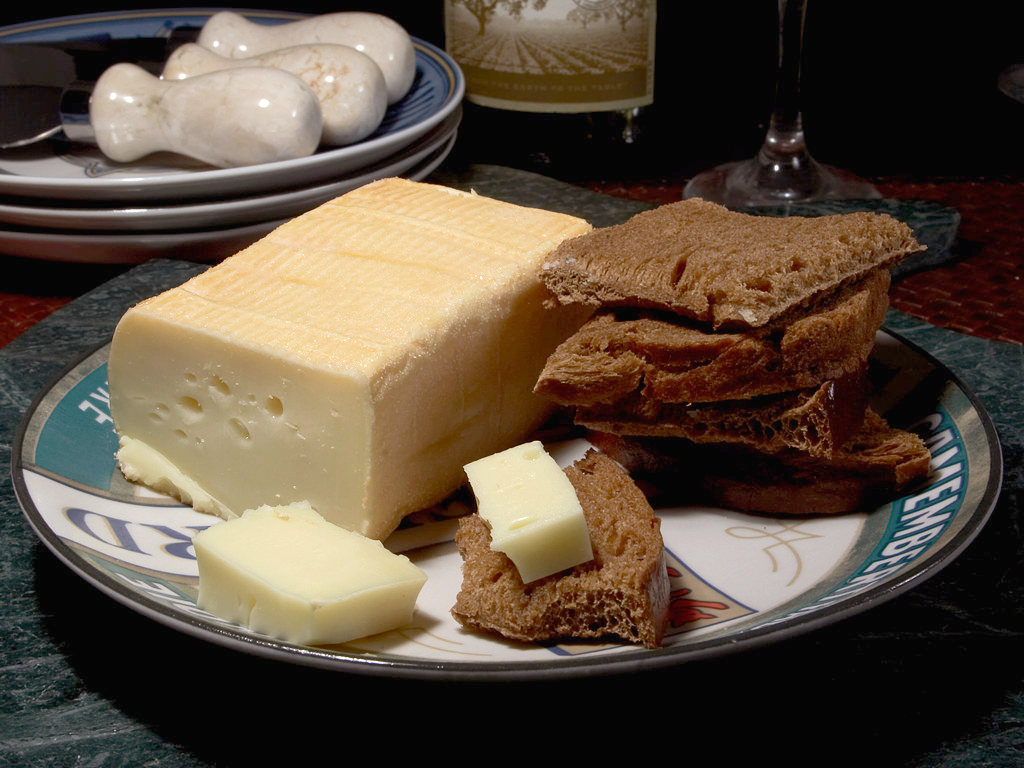
Limburger is a semi-soft, washed-rind cheese that originated in the historical Duchy of Limburg, an area that is now divided among modern-day Belgium, Germany, and the Netherlands. It was first produced during the 19th century, having been created by Belgian Trappist monks in the Herve area of the Duchy.
The production of Limburger cheese later spread to other parts of Europe and eventually made its way to the United States. The cheese was first made in the U.S in 1867 by Swiss immigrants in Green County, Wisconsin, which was an epicenter of Swiss cheesemaking. In fact, Limburger even outpaced other cheeses in popularity there.
One notable producer of Limburger cheese in the U.S. is the Chalet Cheese Cooperative, which was founded as the Swiss Cheese Factory by a group of five Green County dairy farmers in 1885.
Despite its strong smell, Limburger cheese has endured in popularity due to its unique flavor and rich history.
Frequently Asked Questions
1. Why is it called Limburger cheese?
Limburger cheese is named after the region where it was first produced – the Duchy of Limburg. The Duchy of Limburg straddles the modern-day borders of Belgium, Germany, and the Netherlands.
This cheese became popular and started to be produced in other parts of Europe and eventually came to America with European immigrants. So, the name “Limburger” is essentially a geographical reference to its place of origin.
2. Why does Limburger cheese smell so bad?
The distinct, pungent smell of Limburger cheese is due to the type of bacteria used in its production process. The key culprit is a bacterium called Brevibacterium linens, which is used during the aging process.
Brevibacterium linens is the same bacterium responsible for the smell of human body odor, specifically foot odor. When applied to the surface of the cheese, this bacterium breaks down the proteins and fats in the cheese, producing a variety of strong-smelling compounds.
While the odor of Limburger cheese might be off-putting to some, it’s important to note that the taste of the cheese is much milder than its smell. The cheese is creamy and has a slightly tangy or acidic flavor.
Also read:
- Menonita Cheese: A Staple in Northern Mexican Cuisine
- Discover Fontina: An In-depth Guide to Valle d’Aosta’s Culinary Pride
- Stilton – The King of English Blue Cheese: A Gourmet Guide
- The Ultimate Guide to Muenster Cheese: Savor the Flavor
- The Ultimate Guide to Monterey Jack: History, Uses and Pairings
- The Ultimate Guide to Chèvre: Exploring Goat Cheese
- The Ultimate Guide to Kasseri: A Taste of Tradition

